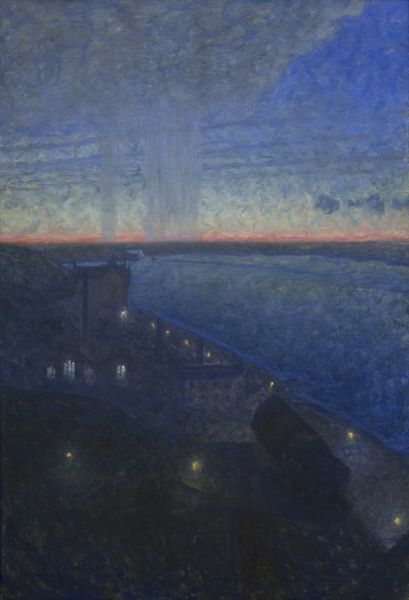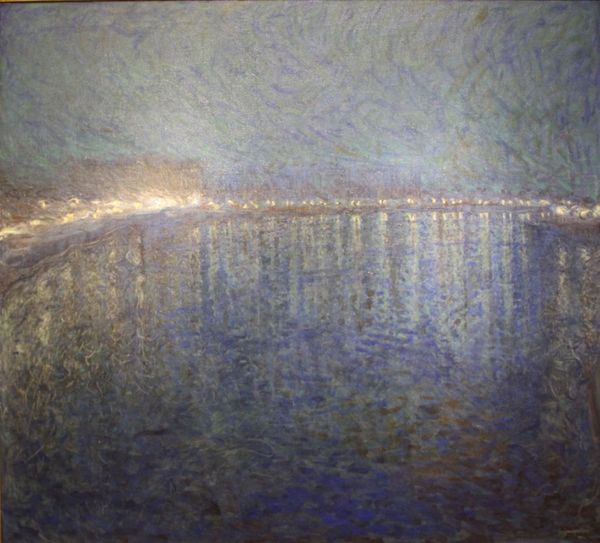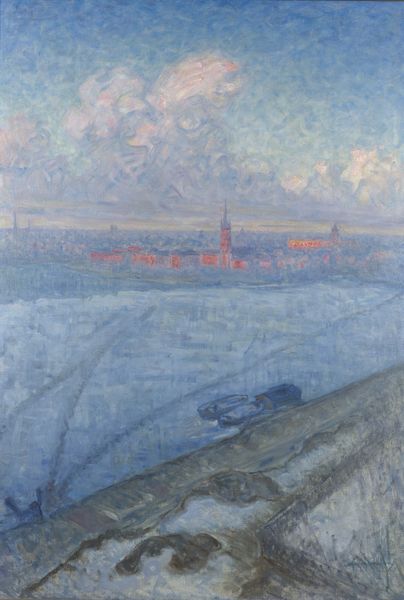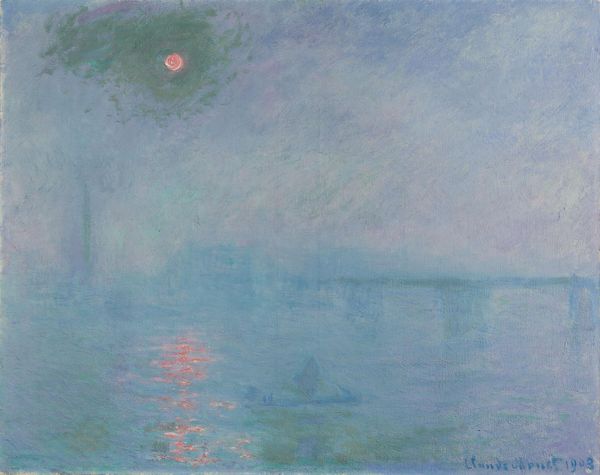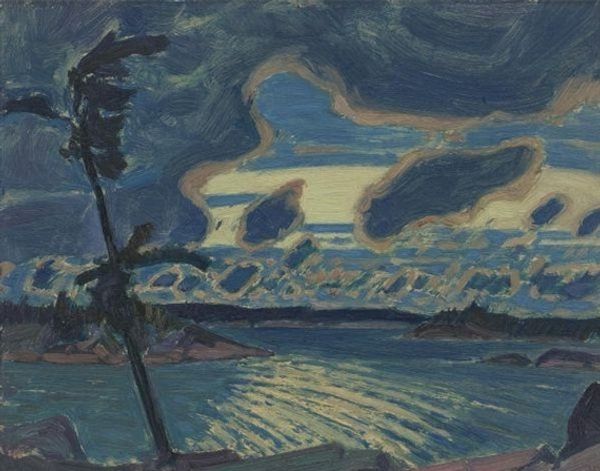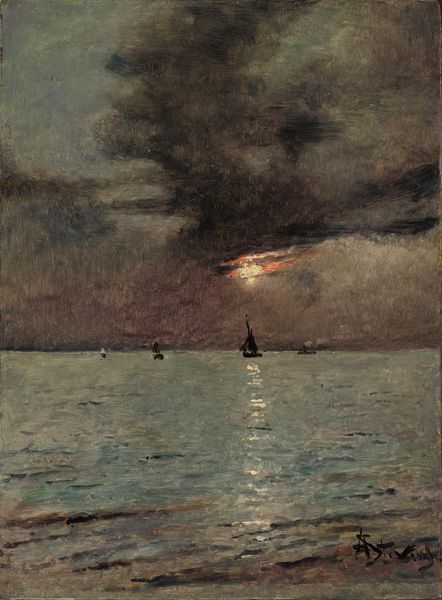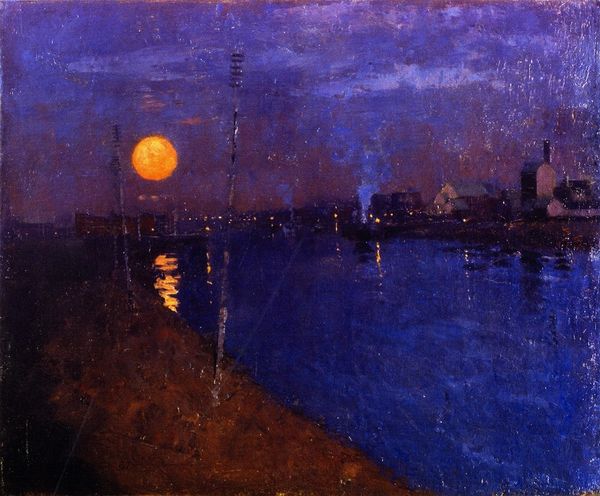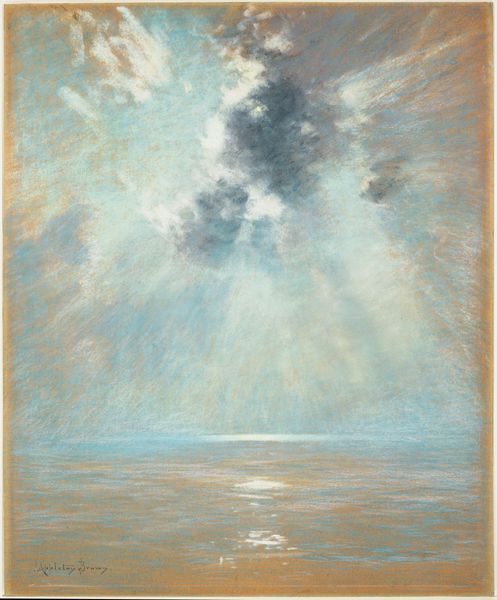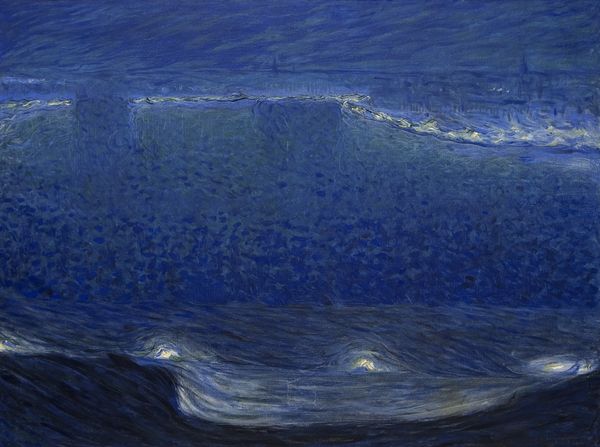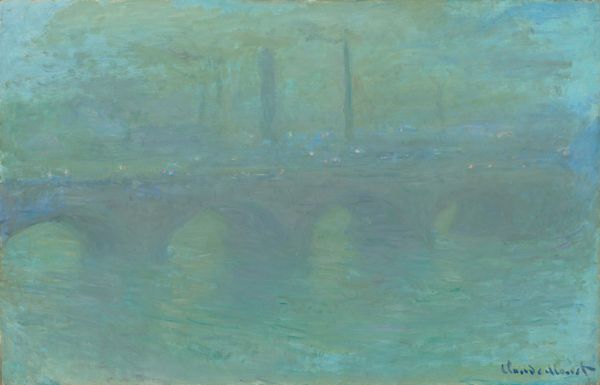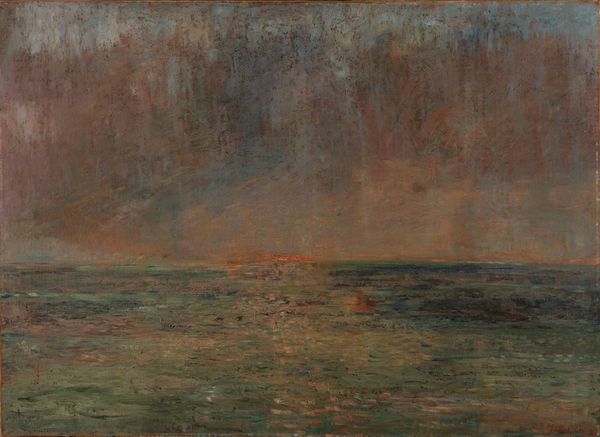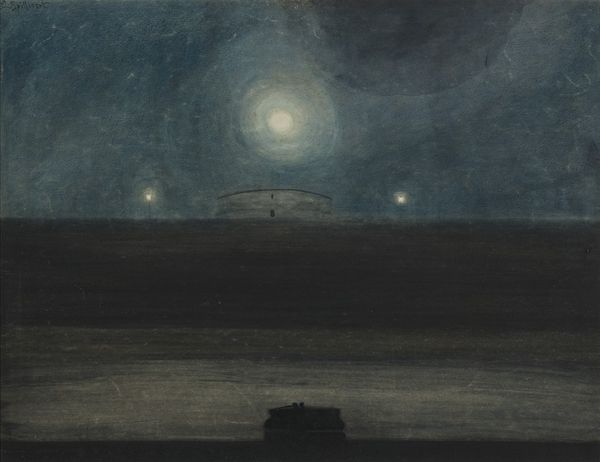
Dimensions: 150 x 135 cm
Copyright: Public domain
Editor: This is Eugène Jansson's "Riddarfjärden i Stockholm," painted in 1898 using oil paint. It’s a nightscape, and the swirling brushstrokes at the bottom make me think of figures almost ghost-like in their rendering, but their location suggests they're simply the docks and reflections on the water. What do you see in this piece, with all its history and atmosphere? Curator: I see a meditation on urban life at the turn of the century. The darkness, pierced by those radiant, almost eerie lights, speaks to the rapid changes happening in Stockholm at that time, but I also see how such darkness can serve as a stage for queer desire, for social life outside of societal norms. Can you imagine those figures on the docks finding each other at night under such low visibility? Editor: So, you’re seeing the painting as more than just a cityscape, more of a reflection on the era itself? Curator: Precisely! Jansson lived during a time of immense social upheaval, and was part of a marginalized population, so urban environments could represent possibility, as well as danger. Think about the painting's intense blues – does that resonate as melancholy for you? The way it can also evoke longing or mystery? Editor: Yes, now that you mention it, the consistent blues do give off an aura of both melancholy and hope. The limited visibility also contributes to both, making the city lights hopeful while equally creating a bit of distance and obscurity from their source. Curator: I think Jansson uses the setting to convey complex emotional states linked to identity. What I find moving is how the composition emphasizes the city lights, hinting at spaces of both anonymous encounters, perhaps clandestine rendezvous, as well as broader social experiences available during an important and volatile moment in time. Editor: I never would have looked at this painting through the lens of social change. Thanks for widening my view of it! Curator: It's about understanding art as more than just aesthetic value, it can provide such meaningful narratives.
Comments
No comments
Be the first to comment and join the conversation on the ultimate creative platform.

